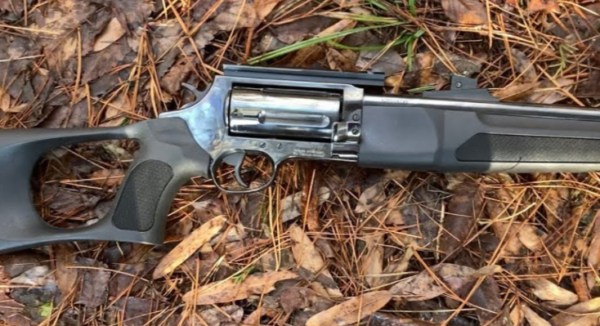Hi dear visitor welcome to our blog.
Glock 19X is one of the best brands in the world of guns.
But some people face problems with this model.
In this guide, we explain 15 common problems of this model with unique solutions. So let’s start now.
Glock 19X Problems

While the Glock 19X is generally revered for its reliability and durability, few users have reported some drawbacks.
A commonly noted problem is the device’s lack of compatibility with Gen 5 magazines due to the protruding front lip. The pistol’s grip length, which is larger than typical compact models, also poses concealment difficulties for some users.
Finally, the absence of front slide serrations might affect those who prefer them for press checks.
1. Poor Recoil Spring Tension
Cause
The Glock 19X, while a formidable firearm, often confronts an issue of unsatisfactory recoil spring tension.
This problem primarily stems from extended usage, leading to the recoil spring losing its optimal tension.
The weakened spring can cause issues such as malfunctioning and reduced accuracy, compromising the effectiveness of the firearm in critical situations.
Solution
The solution for poor recoil spring tension lies in regular maintenance and eventual replacement of the recoil spring.
It’s recommended to change the recoil spring after 5,000 rounds to maintain optimal performance.
A key part of the solution is also to use high-quality springs from reliable manufacturers. This ensures that the firearm functions smoothly and the spring retains its tension over a considerable period.
Regular cleaning and lubrication of the recoil spring also help prolong its life and maintain the performance of the Glock 19X.
2. Incorrect Magazine Fit
Cause
The most common cause for an incorrect magazine fit is usually mismatched magazine and firearm models.
This typically happens when a magazine is designed for one model but is used in another.
Another potential reason could be wear and tear of the magazine’s physical structure, which may prevent it from fitting correctly.
Remember: Always ensure that the magazine and firearm models match. Regular inspection and maintenance can also prevent wear and tear.
Solution
The primary solution to an incorrect magazine fit is to ensure that you are using a magazine designed specifically for your firearm model.
Also, regular maintenance is vital to prevent any physical damage to the magazine over time.
If you notice any signs of wear and tear or damage, it’s advisable to replace the magazine.
Key Takeaway: Always use compatible equipment and ensure regular maintenance to avoid incorrect magazine fit. Do not hesitate to replace a worn-out magazine.
3. FTF (Failure to Feed) Issues
Cause
A Failure to Feed (FTF) issue in firearms typically occurs when the firearm’s mechanism fails to correctly feed the next round into the firing chamber.
This can be due to several reasons including improper ammunition, a dirty firearm, or a worn magazine spring.
Using incorrect or low-quality ammunition may cause misalignment, while accumulated dirt and debris can obstruct the path of the round. A weakened magazine spring may fail to push the rounds reliably.
Solution
To resolve FTF issues, it’s crucial to first identify the exact cause. Regular maintenance and cleaning of the firearm can prevent dirt accumulation, thereby reducing the chances of FTF.
The use of quality ammunition that is appropriate for the specific firearm can help prevent misalignment.
In the case of a worn magazine spring, replacement with a new, robust spring can rectify the issue. It’s always recommended to consult with a professional if FTF issues persist.
4. FTE (Failure to Eject) Problems
Cause
The cause of Failure to Eject (FTE) problems often lies in the interaction between the ammunition and the firearm.
Improperly fitting or low-quality ammunition can lead to an FTE, as can excessive dirt or debris within the firearm itself.
Also, rough or damaged extractor claws, weak extractor springs, and improper extractor tension can lead to FTE issues.
Solution
The solution begins with ensuring that you are using the correct, high-quality ammunition for your firearm.
Regular cleaning of your weapon is also a critical preventative measure.
If these steps fail to resolve the issue, it may be necessary to inspect the extractor claw and spring for damage or wear. Replacing or repairing these parts often resolves FTE problems.
5. Difficulty in Slide Lock Back
Cause
The cause of difficulty in slide lock back typically stems from an issue with the firearm’s spring tension or the slide lock lever.
If the spring tension is too tight or the lever is worn out or improperly installed, it can make the slide lock back difficult.
This problem can also arise from poor handling or lack of proper maintenance, leading to the accumulation of dirt and grime that hampers the smooth operation of the gun.
Proper maintenance and handling of the firearm are crucial to avoid this issue.
Solution
The solution involves careful inspection and cleaning of the firearm. Firstly, check the condition of the slide lock lever and ensure it is not damaged or worn out.
If it’s worn down, consider replacing it. Secondly, inspect the spring’s condition and check its tension.
If it’s too tight, it might need relaxing or replacing. Conduct regular cleaning to prevent the accumulation of dirt and grime that could hamper the firearm’s operation.
Remember, regular inspection, cleaning, and replacement of worn parts are key to ensuring your firearm functions smoothly and effectively.
6. Inconsistent Trigger Pull
Cause
Inconsistent trigger pull is often a result of improper grip or lack of practice.
The pressure applied to the trigger should be smooth and steady, but beginners or those unfamiliar with a particular firearm might struggle with this.
Incorrect positioning of the finger on the trigger, changes in grip during the pull, or even anticipation of the shot can lead to inconsistent trigger pull.
Solution
The primary solution is regular, focused practice, aiding in the development of muscle memory.
It’s beneficial to begin with dry fire practice, pulling the trigger on an unloaded firearm, to get used to the feel and pressure required.
Using a consistent grip, positioning the finger correctly on the trigger, and maintaining this position during the shot can significantly improve consistency.
Investing time in proper training can lead to a smoother, more consistent trigger pull, and ultimately, better shooting performance.
7. Polymer Frame Flex
Cause
The cause of Polymer Frame Flex can be attributed to several factors, but the most common one is the high-stress load on the polymer material.
Frequent and high-intensity usage can lead to wear and tear, causing the frame to flex. Additionally, exposure to extreme temperatures can also result in the material losing its rigidity.
Solution
A possible solution to tackle Polymer Frame Flex can be the strategic use of reinforcements in high-stress areas.
Employing the use of materials like steel or aluminum in these areas can significantly enhance the durability and rigidity of the frame.
Regular inspection and maintenance is another essential step to ensure the longevity of the polymer frame.
Lastly, avoiding exposure to extreme temperatures can help maintain the integrity of the material.
8. Cracked Frame
Cause
The cause of a cracked frame can be attributed to multiple factors. Excessive stress or physical pressure on the frame, improper handling, and age-related wear and tear are some common culprits. Cracks may also occur due to manufacturing defects or the use of substandard materials.
Solution
Providing a solution for a cracked frame largely depends on the extent of the damage and the material of the frame.
For minor cracks, applying a strong adhesive may suffice. However, for severe damage, professional restoration or replacement may be required.
Regular maintenance and proper handling can significantly prevent the occurrence of cracks.
9. Barrel Peening
Cause
Barrel peening is typically caused by excessive wear in the firearm’s barrel due to heavy usage or improper maintenance.
This results in a deformation of the barrel interior, negatively affecting the accuracy and performance of the firearm.
Over time, this can lead to a decrease in the lifespan of the firearm and potential safety hazards.
Solution
The solution to barrel peening involves a two-pronged approach: preventive maintenance and corrective action.
Preventive maintenance includes regular cleaning and proper storage of the firearm to reduce the risk of wear.
Corrective action, on the other hand, might involve professional barrel repair or replacement. By combining preventive measures with timely corrective actions, barrel peening can be effectively managed and mitigated.
10 finish problems
Cause
Often, the cause of our inability to finish problems lies in a lack of clear understanding, the absence of a structured approach, or simply feeling overwhelmed by the magnitude of the problem.
Without a clear path, solutions can seem elusive. Misunderstanding the problem can also lead to incorrect or ineffective solutions.
Solution
The solution to finishing problems usually starts with taking the time to fully understand the problem at hand.
Breaking down the issue into smaller, manageable parts can make it less daunting and easier to tackle. Implementing a structured approach, such as the PDCA (Plan-Do-Check-Act) cycle, can also be beneficial.
This involves planning a solution, implementing it, checking the results, and adjusting the plan as necessary.
Consistent application of this method can significantly improve problem-solving skills over time.
11. Inaccurate Sight Alignment
Cause
Inaccurate sight alignment is primarily caused by an improper positioning of the eye in relation to the sighting device, causing the bullet to deviate from its desired path.
This misalignment, however minute, can drastically affect the accuracy of the shot, leading to inconsistent and unpredictable results.
Solution
The solution to this issue lies in regular practice and developing a consistent, repeatable sight alignment.
A shooter should align their dominant eye perfectly with the sights, ensuring that the front and rear sights are lined up with the target.
By maintaining a consistent eye position and practicing regular sight alignment checks, shooters can greatly improve their accuracy and precision.
12. Grip Size discomfort
Cause
The primary cause of grip size discomfort often stems from using equipment that does not correctly fit an individual’s hand size.
This could be a tennis racket, golf club, or any other tool that requires a firm grip.
Using improperly sized equipment can strain the muscles in the hand, leading to discomfort and potential injury.
Incorrect grip size can result in poor performance, discomfort, and long-term hand injuries.
Solution
The solution to grip size discomfort is straightforward – use equipment that fits your hand size properly. It’s essential to measure your hand size and match it with the right equipment.
Many stores offer professional fitting services, ensuring you get the proper size. Additionally, consider using grip enhancers or custom handles for a more personalized fit.
Correctly sized equipment will not only prevent discomfort but also enhance overall performance and prevent long-term damage.
13. Difficulty in Disassembling for Cleaning
Cause
The cause of difficulty in disassembling for cleaning often stems from complex design mechanics or the lack of clear instructions.
Products with intricate parts can be quite daunting to dismantle without risking damage.
Similarly, the manufacturer’s guide may not adequately explain the disassembly process, creating confusion for the user.
Solution
The solution to this problem lies in simplified design and clear user instructions.
Manufacturers should consider ease of disassembly when designing their products and include comprehensive, step-by-step instructions for the process.
Including visual aids in the user guide, like diagrams or videos, can significantly help users understand the correct and safe method to disassemble their products for cleaning.
14. Difficulty with Aftermarket Parts
Cause
Aftermarket parts, though cost-effective, often lead to issues due to their varying quality and compatibility.
Manufacturers don’t design these parts specifically for a certain model, leading to potential fit and performance problems.
In some cases, the use of aftermarket parts may even void the vehicle’s warranty.
Solution
A solution to this issue is to emphasize on quality over cost when choosing aftermarket parts.
Consumers should research and select reliable brands known for their superior quality.
Additionally, consulting with a trusted mechanic before purchase can also be beneficial.
A professional understands the compatibility and fit of different parts, ensuring that the aftermarket part will function properly in the vehicle.
15. Slide Stop Lever Issues
Cause
The slide-stop lever issues often arise due to excessive wear or improper installation.
Regular use, combined with a lack of proper maintenance, can lead to accelerated wear of the component.
Moreover, if the lever is incorrectly installed, it may not function as intended.
Regular maintenance and proper installation are key factors in preventing slide-stop lever issues.
Solution
The solution involves two steps: inspection and replacement. Begin by inspecting the lever for signs of wear or damage.
If any issues are detected, the lever should be replaced with a new, quality part.
It’s essential to ensure that the replacement is completed correctly to prevent further issues. Always refer to the manufacturer’s instructions or consult with a professional.
Conclusion
Addressing slide-stop lever issues requires both proactive maintenance and reactive measures.
Regular inspection can help detect wear and damage early on, enabling timely replacement and preventing potential malfunctions.
It is crucial to remember that the effectiveness of these measures hinges on adhering to the manufacturer’s guidelines and seeking professional advice when necessary.
Proactive maintenance coupled with appropriate reactive actions can ensure the longevity and proper functioning of the Slide Stop Lever.
FAQs
Why does my Glock 19X keep jamming?
The Glock 19X may jam due to improper cleaning, worn-out components, or incorrect ammunition.
Is A Glock 19X accurate?
Yes, the Glock 19X is known for its accuracy, largely due to its barrel length and sight radius.
What problems does the Glock 19 have?
Common issues with the Glock 19 include excessive recoil, difficulty in handling for small-handed shooters, and occasional jamming if not properly maintained.
Why did the army reject the Glock 19X?
The army rejected the Glock 19X primarily due to its inability to pass rigorous modular requirements.


As the founder and owner of the domain “mygunsgeek.com”, I bring to the table a deep passion for firearms, combined with a strong commitment to sharing this knowledge with a wider audience. With years of experience exploring the inner workings of various firearms, from pistols to rifles, I have cultivated a vast expertise in this field. This has enabled me to create a platform that serves as a trusted resource for gun enthusiasts, providing comprehensive reviews, advice, and insights into the latest trends and advancements. I am dedicated to ensuring that my content is both informative and engaging, helping my readers make informed decisions about their firearm choices. For any inquiries or suggestions, feel free to reach out to me at wwwfffwww117@gmail.com. Your feedback is invaluable in shaping the content and direction of mygunsgeek.com.


